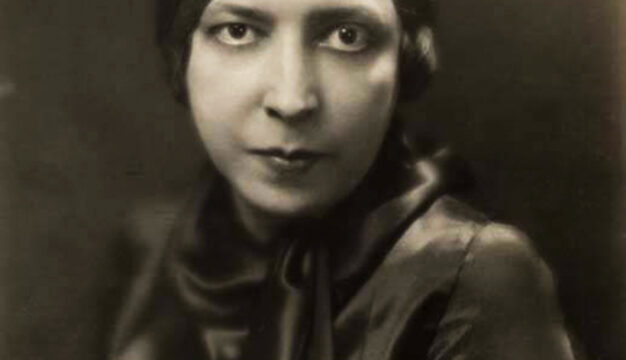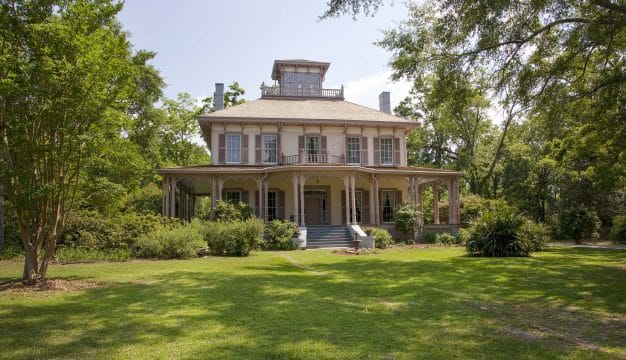Laird Cottage and Geneva Mercer Museum
Laird Cottage in Demopolis, Marengo County, is a nineteenth-century house museum run by the Marengo County Historical Society. Constructed in the 1870s, the home was purchased in November 1914 by local dentist Marcellus Laird, for whom it is currently named. After Laird died in 1918, the building went through various owners until it was bequeathed to the Marengo County Historical Society in 1993. It has since served as the headquarters of the Marengo County Historical Society as well as the official Geneva Mercer Museum, which celebrates nationally and internationally acclaimed Alabama sculptor and painter Geneva Mercer, who spent her final years in Demopolis.
 Laird Cottage
Laird Cottage was built in the 1870s by attorney and planter Simon Wheeler in a mixed Italianate and Greek Revival style. It is one story and features a front portico that spans the width of the house and a chimney on the south end; it has been remodeled since its construction. The home was sold to Walter Marcellus Laird and his wife Dora Mercer Laird on November 7, 1914, from the Foscue family. A Kentucky native, Laird originally lived in Jefferson, Marengo County, where he married Dora and later moved to Demopolis. On March 30, 1918, Laird died suddenly, less than a year after the birth of his third child, Elizabeth "Libby" Laird. Recently widowed, Dora stayed in the home and began her own career at Commercial National Bank, where she remained until her retirement.
Laird Cottage
Laird Cottage was built in the 1870s by attorney and planter Simon Wheeler in a mixed Italianate and Greek Revival style. It is one story and features a front portico that spans the width of the house and a chimney on the south end; it has been remodeled since its construction. The home was sold to Walter Marcellus Laird and his wife Dora Mercer Laird on November 7, 1914, from the Foscue family. A Kentucky native, Laird originally lived in Jefferson, Marengo County, where he married Dora and later moved to Demopolis. On March 30, 1918, Laird died suddenly, less than a year after the birth of his third child, Elizabeth "Libby" Laird. Recently widowed, Dora stayed in the home and began her own career at Commercial National Bank, where she remained until her retirement.
Geneva Mercer (1889-1984), also of Jefferson, was Dora Mercer's sister. From an early age, she exhibited immense talent for sculpting. After enrolling at the State Normal School (present-day University of West Alabama), Mercer studied art professionally and her talents were noticed by school president Julia Tutwiler, who arranged to have her apprentice with famed Italian sculptor Giuseppe Moretti. He designed Vulcan in Birmingham, the largest cast iron statue in the world, and created other notable works from Sylacauga marble.
 Geneva Mercer
After completing her apprenticeship with Moretti, Mercer remained his assistant until his death in 1935 and continued to operate the Moretti studio until the death of Moretti's wife, Dorothea Long Moretti. Mercer's works adorn many public buildings in Alabama, including the Julia Tutwiler Memorial Tablet for the Alabama Department of Archives and History as well as various Tutwiler memorials for universities throughout the state, including the University of Montevallo and the University of Alabama. She also created the "Flimp Fountain," which is part of the Montgomery Museum of Fine Art's permanent collection and inspired the museum's annual spring "Flimp Festival." The term Flimp was coined by Mercer to describe "flower imps," which are like the fictional fairies or elves and inhabit gardens.
Geneva Mercer
After completing her apprenticeship with Moretti, Mercer remained his assistant until his death in 1935 and continued to operate the Moretti studio until the death of Moretti's wife, Dorothea Long Moretti. Mercer's works adorn many public buildings in Alabama, including the Julia Tutwiler Memorial Tablet for the Alabama Department of Archives and History as well as various Tutwiler memorials for universities throughout the state, including the University of Montevallo and the University of Alabama. She also created the "Flimp Fountain," which is part of the Montgomery Museum of Fine Art's permanent collection and inspired the museum's annual spring "Flimp Festival." The term Flimp was coined by Mercer to describe "flower imps," which are like the fictional fairies or elves and inhabit gardens.
In her later years, Mercer returned to Demopolis to live out her final days, next door to her niece Libby. There, she painted and wrote verse and continued to sculpt. By the time of her death in 1984, she was one of Alabama's most notable artists and the first Alabama artist to have all her works documented by the Smithsonian Institution. Mercer was inducted into the Alabama Women's Hall of Fame at Judson College in 1989.
In 1993, Libby Laird bequeathed Laird Cottage to the Marengo County Historical Society and died that same year. The cottage is now the official headquarters of the historical society, which was organized in 1961 and which owns nearby properties that include Bluff Hall and Lyon Hall. The society's mission is to gather, collect, preserve, study, and publicize both the facts and artifacts of the history of Marengo County.
Laird Cottage is located at 311 N. Walnut Ave. It is open to the public by appointment only.



